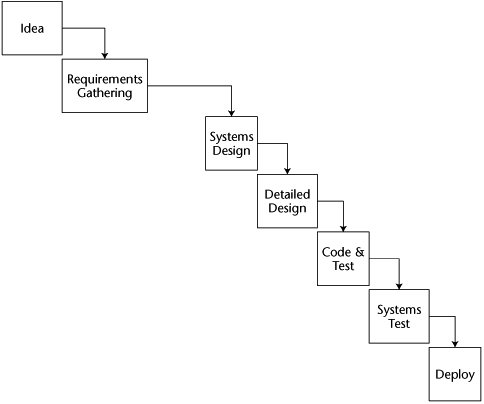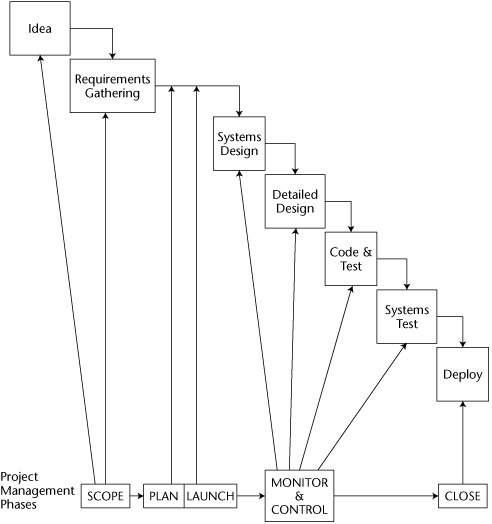Types of Linear SDPM Strategies
Two fundamental models fall into the Linear class, the Standard Waterfall and the Rapid Development Waterfall. Both are introduced here. In addition to the models themselves, I have included a graphic of the Linear SDPM strategy as applied to each. The details of those strategies are discussed in Chapters 4 through 9.
Standard Waterfall Model
Figure 3-2 was displayed in Chapter 2 and is reproduced here for easy reference.
Figure 3-2. The Standard Waterfall model

The first thing to note about this version is that each phase must be complete before the next phase can begin, and that once a phase is complete there is no returning at some later point to revise work completed earlier. That might be acceptable until a change is introduced at which time potential scheduling disaster might result.
Figure 3-3 illustrates the Linear SDPM strategy for the Standard Waterfall model.
Figure 3-3. Linear SDPM strategy for the Standard Waterfall model

Variation to the Standard Waterfall Model
A variation of the Standard Waterfall model somewhat alleviates the non-overlap situation of the Standard Waterfall Model. It is shown in Figure 3-4.
Figure 3-4. A variation of the Standard Waterfall model
Note the overlap between successive phases. That brief period ...
Get Effective Software Project Management now with the O’Reilly learning platform.
O’Reilly members experience books, live events, courses curated by job role, and more from O’Reilly and nearly 200 top publishers.

